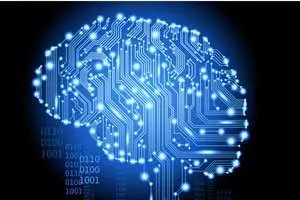
Common Ground: UTM hosts first conference for digital humanities and computational science researchers
U of T Mississauga hosted a meeting of minds last week as researchers in digital humanities and computational sciences gathered together to explore common ground between very different disciplines.
The first-ever Digital Humanities and Computational Sciences conference featured talks from a dozen UTM faculty and staff with the goal of fostering more communication between the two disciplines, and finding commonalities, challenges and research opportunities resulting from advances in computational technology.
Organizer Wagih Ghobriel, associate professor, teaching stream, in UTM’s Department of Chemical & Physical Sciences, first explored the intersection between computational science and digital humanities in a 2017 seminar on campus. He sees a parallel with early thinkers such as Leonardo da Vinci and Sir Isaac Newton, who saw little division between their explorations in arts and sciences. “There are so many emerging research specializations, from digital histories and digital psychology to computational physics and chemistry, and we have seen amazing improvements in the speed, storage and efficiency of computation,” he says. “We wanted to gather everyone together to explore what is going on at UTM, and what our common interests might be. Finding areas of overlap could save time and resources, and lead to new avenues of discovery.”
The one-day conference featured presentations on diverse topics including artificial intelligence that writes computer-generated poetry, how geographers employ remote sensing methods to classify tree species, and how cancer researchers are applying language-recognition algorithms to clinical data.
Conference keynote speaker Professor Alexandra Gillespie of the Department of English and Drama spoke about how digital humanities scholars harness computing power. According to Gillespie, the methods she employs in her analysis of medieval texts are similar to those used by her colleagues in the sciences—such as computational platforms to recognize language patterns, categorize visual data and contribute to an ongoing collaborative digital dictionary of medieval English. Gillespie points to other digital humanities scholars who use computers to sift for multi-word phrases in large textural data sets to better understand the development of ideas through literature. Other researchers focus on “media and medium, software and hardware and where they stand in relation to the production of meaning.” Gillespie points to the Parker Collection, which was the first entire library collection to be digitized and made available online. “A lot of digital humanities is about making it easier to access, see and work with cultural heritage data, like putting cultural materials such as Thomas Aquinas’ works, old manuscripts or Shakespeare’s plays into digital forms,” she says. “But we are also interested in what new questions we can ask about it.” Gillespie notes that the field is expanding, and includes a network of 230 digital humanities scholars across U of T who will gather at UTM in August 2018 for their annual summer retreat.
Growing computational power is changing the hard sciences, too. Associate Professor Ulrich Fekl of the Department of Chemical & Physical Sciences spoke about a future where laboratory experiments will be replaced with computation. “The underlying science behind chemistry has been known since 1926. Now, better computational algorithms and hardware makes it feasible to answer some chemistry questions completely with the use of computers,” Fekl says. “Changes in energy can now be answered, not by combusting a molecule, but by computing a molecule.”
Fekl points to the growing access that researchers have to consortium supercomputing centres like SciNet and Niagara, as well as a new UTM high-performance computing service that launched in February 2018.
“Tremendous progress in computational infrastructure means we can now compute—with a high degree of accuracy—useful molecules. You can predict the colour of a molecule, even if you have never made it before. This is being computed now with an accuracy that is higher than experimental accuracy,” he says. The accuracy of computational chemistry also makes it an important tool in catching errors or irregularities that might occur in a laboratory setting. “I personally like experiments—but for more and more problems, computation is the best method,” he says.
